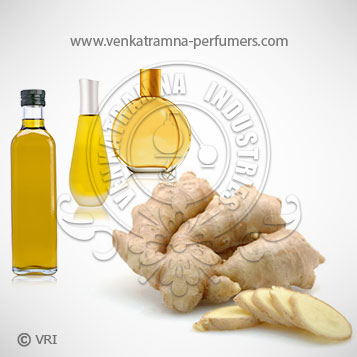
| Botanical Name | Zingiber officinalis |
| Common Name | Root Ginger, Common or Jamaica Ginger. |
| Country of Origin | India |
| Solubility | Soluble in alcohol and oils. Insoluble in water |
| Specific Gravity | 0.870 – 0.882 @ 20°C |
| Optical Rotation | (-47) – (-28) @ 20°C |
| Refrective Index | 1.488 – 1.495 @ 20°C |
| PlantPart | Roots |
| Bland With | Ginger oil blends well with all citrus and spicy oils like bergamot, frankincense, neroli, rose, sandalwood and ylang-ylang. |
| CAS No | 8007-08-7 |
| Flash Point | 57 °C |
| Extraction Method | Supercritical CO2 Extraction |
Ginger oil is extracted from the plant Zingiberaceae officinale of the Zingiberaceae family. Also known as Common or Jamaica Ginger, it is a tuber and can be consumed whole as a delicacy, medicine, or spice. The ginger root is macerated and distilled over high heat, for extracting the oil.
The plant is said to originate from India, China and Java, but is also native to Africa and the West Indies. It is believed that ginger was brought to Europe between the 10th and 15th century as both a condiment and spice. It has been used for medicinal purposes since the ancient times; it is recorded specifically in both Sanskrit and Chinese texts. It is also mentioned in literature from the Greeks, Romans, and Arabians
Color : Pale yellow liquid with Characteristic spicy somewhat pungent ginger odor,
Aroma : Ginger oil has a wary, spicy and woody scent.
It has various chemical constituents such as a-pinene, camphene, b-pinene, 1,8-cineole, linalool, borneol, y-terpineol, nerol, neral, geraniol, geranial, geranyl acetate, b-bisabolene and zingiberene.
This essential oil is used in the treatment of fractures, rheumatism, arthritis, carbuncles, bruising, nausea, hangovers, colds, flu, catarrh, congestion, coughs, sinusitis, sore throat, diarrhea, colic, cramps, chills and fever.